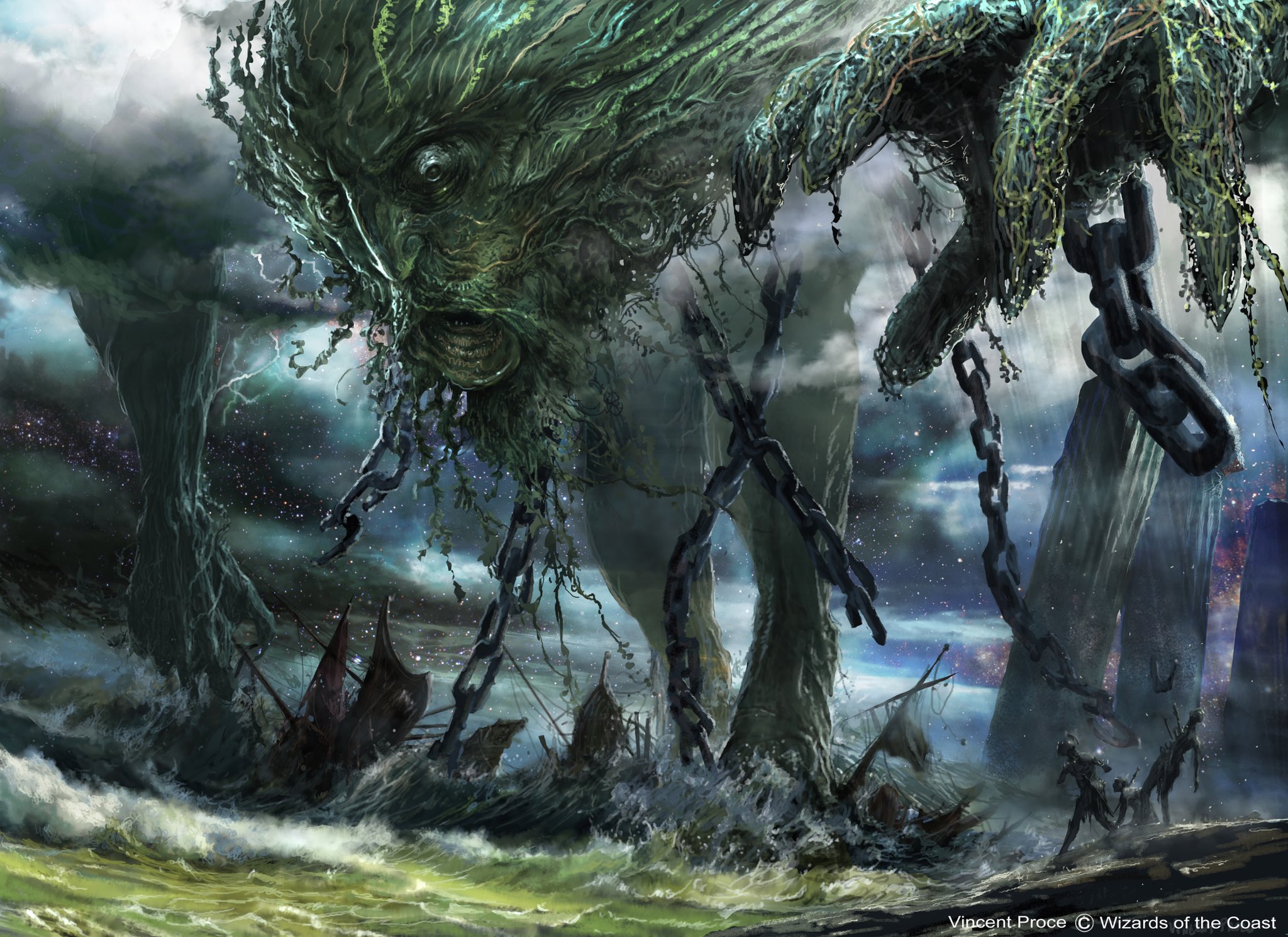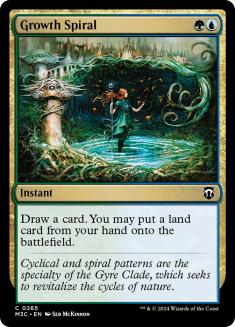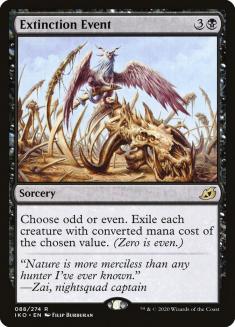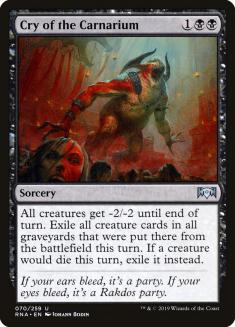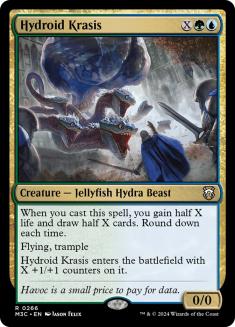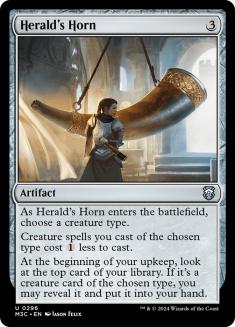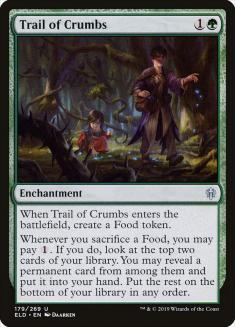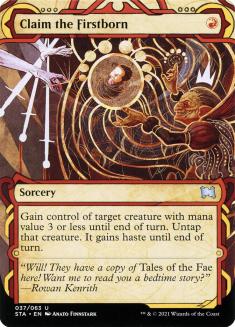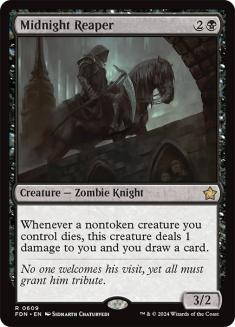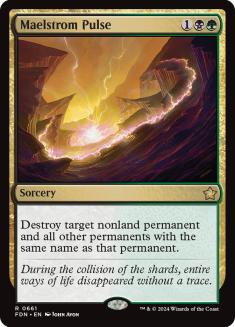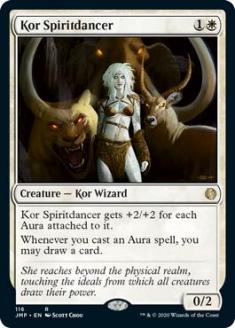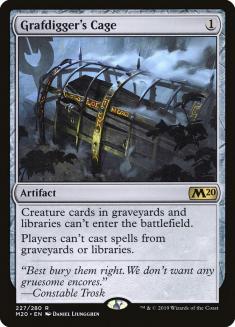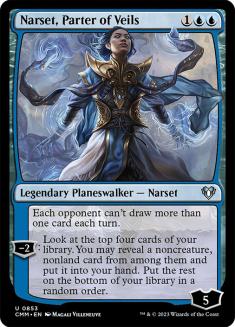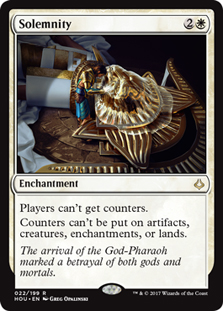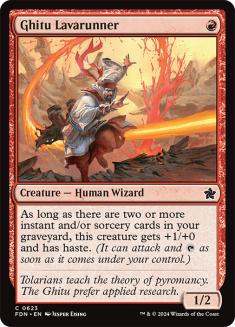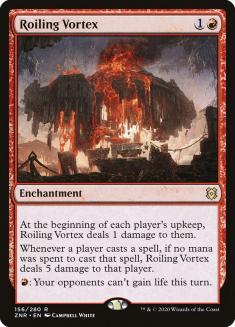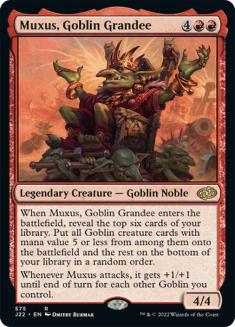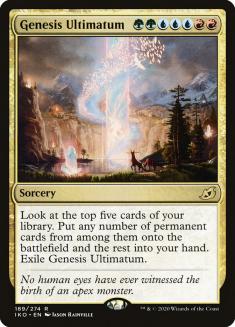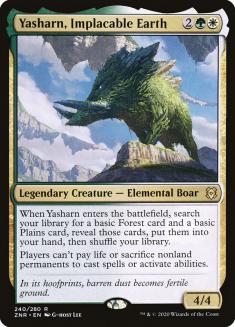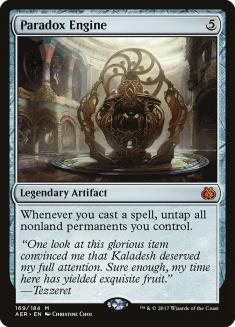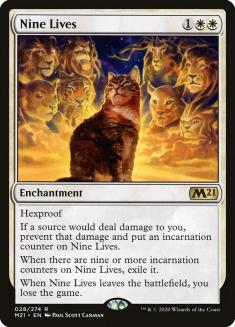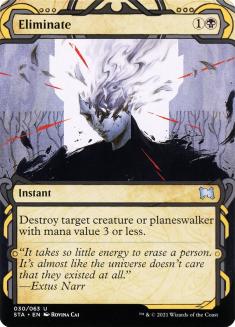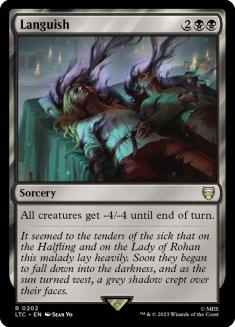Sultai and Four-Color Midrange in Historic are great decks.
Cedric has been broken. He’s casting Uro, Titan of Nature’s Wrath and he loves it. If there’s a list of “signs you should be playing a non-aggro deck,” that’s one of them.
But if you really, really want to be on the other side of the most broken mythic rare still legal in Historic, here’s how you need to approach it.
The Problems
Creatures (7)
Planeswalkers (4)
Lands (28)
Spells (21)

The reason so many decks run right into a brick wall when they face down Sultai Midrange is the deck’s overlap of being disruptive, proactive, and overwhelming.
You can’t rely on single permanents to do anything, because the Sultai deck is loaded up on really efficient answers. Even worse than being efficient, a lot of their offerings are broad. Thoughtseize and Maelstrom Pulse are maindeckable answers to anything, but diving into their sideboard almost always brings cards like Negate or Aether Gust that are similarly useful against a large number of threats or permanents you thought might beat them.
It’s exceptionally hard to try to outrace Sultai, because something silly like “being on the draw” will happen to you. Historic isn’t a Turn 3 format, so good luck winning after starting your Turn 4 facing down Nissa, Who Shakes the World and an untapped 3/3 Zagoth Triome while your opponent has been able to cast multiple other non-ramp spells.
Even if you’re on the play, your plan of flooding the zone with garbage is easily contested.
If you try to contest their threats, your opponent will just stack up a ton of residuals and bury you in cards. Every threat cantrips or leaves behind a body, half of them gain life, and most of them threaten even worse than a simple two-for-one. You can’t win the game if you let them sit around, but you also can’t win the game if you try to interact with them.
This is the issue with Sultai. To win, you have to thread the needle between efficient interaction, fast and powerful threats, and always ending up behind if you try to stop them from winning.
Spot answers, fast threats, sweepers, and inevitable card advantage: those are the four angles Sultai will take every matchup, and to beat Sultai you need to handle all of them. If you reduce the matchup to just one of those angles, maybe you can make it a fight, but it’s really easy for fighting over a single one of those to backslide into letting their other tools take over.
Answer 1: Engines
The traditional way to attack midrange decks is to have some hard-to-answer engine of your own and simply outperform their attempts to trade cards. Sultai is significantly better than your average midrange deck at defeating this plan, but it can still work in certain circumstances.
Creatures (31)
- 4 Goblin Matron
- 3 Goblin Warchief
- 4 Skirk Prospector
- 4 Goblin Chieftain
- 4 Krenko, Mob Boss
- 4 Wily Goblin
- 4 Conspicuous Snoop
- 4 Muxus, Goblin Grandee
Lands (22)
Spells (7)

Autumn’s addition of Herald’s Horn to Mono-Red Goblins was a key part of their success in the Sultai matchup at the Zendikar Rising Championship, but I think there are a lot of ways to try the same thing and fail horribly.
Unshockingly, you can place all the credit/blame for the success of Goblins on Muxus, Goblin Grandee. The Herald’s Horn strategy leverages the threat that Muxus poses to the Sultai deck.
Remember how I mentioned the compounding value of all the Sultai threats? The typical issue with an engine against it is that basically every engine is worse than Uro and Nissa. You get a card or whatever; your Sultai opponent gets cards along with mana and creatures or life.
What Muxus offers is a way to overwhelm Uro and Nissa. It’s not even assured to be good enough and the odds degrade rapidly as your Sultai opponent gets more untaps with their threat, but it’s a chance.
With that game-ending Goblin in your toolbox, what Herald’s Horn offers is a negation of all the answer plans Sultai has. That pushes your Sultai opponent all-in on a hand with Nissa or Uro, forces your opponent to push towards a fast threat to keep up, and in general keeps you in the driver’s seat and out of the “behind and topdecking to Muxus” scenarios where Goblins is statistically unlikely to win. The cost-reduction part of Horn is key to this melding of both plans, heightening the threat of potential Muxus while the rest of the Horn toots out Goblins.
Creatures (19)
Planeswalkers (3)
Lands (25)
Spells (13)
Sideboard

Jund Sacrifice utilizes Trail of Crumbs in a similar fashion, but it doesn’t have a Muxus at the top-end to seal the deal. Korvold can outscale Uro and Nissa if you untap with it, but the effect is not immediate.
Instead, Jund Sacrifice utilizes the Trail of Crumbs engine to give it room to fight over the threats that Sultai has to offer. I have even more to say about Claim the Firstborn later, but if you can ensure that your Sultai opponent can’t win the game by trading cards via Trail of Crumbs, you almost always force them into a situation where Claim the Firstborn is really bad news for them.
You may notice that both the engines I mentioned were artifacts or enchantments. Having your engine not die to Fatal Push or Eliminate certainly helps against Sultai. It’s even more amplified if your deck overloads their limited number of Maelstrom Pulses with other artifacts or enchantments like Witch’s Oven, or if your primary strategy is redundant low-curve aggro like Goblins, which inherently mitigates Thoughtseize. But being a noncreature permanent isn’t a requirement of a good engine.
Creatures (26)
- 2 Scrapheap Scrounger
- 3 Stitcher's Supplier
- 3 Midnight Reaper
- 4 Priest of Forgotten Gods
- 4 Mayhem Devil
- 4 Cauldron Familiar
- 4 Woe Strider
- 2 Kroxa, Titan of Death's Hunger
Lands (24)
Spells (10)

Midnight Reaper is the perfect example of this. Your Sultai opponent should never get a good exchange on Midnight Reaper. You do need to play the game with Cry of the Carnarium and Extinction Event always in mind, but it’s very doable. Beyond that, you should be trying to line up your Midnight Reaper so you get immediate value in addition to the two-for-one if they Fatal Push Midnight Reaper. Try not to cast Reaper until you have an immediate sacrifice lined up for it, and these same rules apply to equivalent creature engines in other decks.
Kor Spiritdancer out of Azorius Auras seems to have a lot of these properties, so why doesn’t it work?
First big issue: Kor Spiritdancer versus removal doesn’t end well for the Spiritdancer. That’s a strike relative to the Midnight Reaper model, but not a clean out.
The real issue? The rest of the Azorius Auras deck lacks all the tools we just talked about. When your Kor Spiritdancer dies, you can’t beat Uro in a heads-up. There are no tools to punish it and no effects that overwhelm it. A similar situation occurs with Experimental Frenzy out of Mono-Red Aggro, and it’s even worse since a year and a half of Standard showed just how well the matchup of that card against Nissa went.
The summary of beating Sultai with an engine: dodge removal or get value against it, make their Thoughtseizes bad or overwhelm them with other key targets, and make sure your deck can stand up to Uro. If you meet those metrics, a churning source of card advantage might be the tool you need to beat the midrange menace.
Answer 2: Hate Cards
It’s weird to say, but you can try to attack Sultai Midrange with true hate cards. Just like the engine approach, it’s effective but conditional on the rest of your deck.
Planeswalkers (6)
Lands (26)
Spells (28)

Azorius Control is the deck that has executed this plan best, and the combination of graveyard hate and Narset, Parter of Veils is the most broadly effective plan against Sultai Midrange.
If the point of engines against Sultai is to negate their interaction, the point of hate cards is to negate their threats. Hyroid Krasis, Uro, Nissa, and potentially Shark Typhoon: that’s literally all the threats a typical Sultai list can muster.
Azorius can field answers to everything, but loses to the accumulated card advantage of Hydroid Krasis and Uro. Narset covers that, and Grafdigger’s Cage covers even needing to line up an answer for Uro.
But despite Brad Barclay’s massive success with the deck, I’m not sure that’s quite enough against Sultai. It certainly covered Four-Color Midrange, but an extra couple of Narset and Shark Typhoon on the Sultai side can be enough to flip everything over against the Azorius deck.
Lands (24)
Spells (36)

While the Nine Lives deck operates a bit differently by assuming Sultai just won’t have relevant cards in the entire deck, there’s a subtle example of the same principle with Solemnity.
In theory, a Maelstrom Pulse can give Sultai Midrange a single turn of free attacks, and with an active Nissa you could accumulate twenty power easily through Wrath of God. But Solemnity means Nissa can’t place +1/+1 counters on lands, Solemnity means Hydroid Krasis can’t drop as a 10/10, and without those, most Game 1s Sultai can’t even produce twenty power at once if it tried.
The important part in both of these cases is that the hate cards are backing up a strategy attempting to handle all of their threats, or a strategy being able to ignore everything but a single threat. The biggest punt I continue to see in this category is a deck that loses to Sultai’s removal bringing in Grafdigger’s Cage because it struggles against Uro. Like, that’s great, but their Uro cycles and your deck still loses to Nissa plus an Extinction Event. Putting yourself down a card only makes that situation more likely.
If your hate card is incidental hate in addition to being a functional card when things don’t line up, then I can excuse it. Don’t trick yourself into thinking some clunky or low-impact card is functional here, but Roiling Vortex is right on the margin of what I’m talking about. If a Gruul Aggro deck randomly had Scavening Ooze in the sideboard and a marginal two-drop in the maindeck, that’s the level of swap that might steal a game. Bringing in Rest in Peace as Azorius Auras, on the other hand, is exactly what you should not be doing.
Keep in mind that you can cut off Sultai’s threats in ways that aren’t just traditional hate cards locking out their functionality. When I said I would loop back to Claim the Firstborn, this is what I was talking about. Making casting their threats high-risk is about as good as making casting them impossible in the first place.
One additional caveat of hate cards is they make you inherently weaker to Thoughtseize by polarizing your draw against theirs. Since no hate card covers all their threats, you could either have a clear-cut card to take with Thoughtseize if it opens up an Uro or a clear-cut blank to leave if their draw is Nissa-centric. This is the same as the Mono-Red with a Cage issue making that deck worse against removal since they’re down a card and mana to cast their otherwise blank interaction, but being bad against Fatal Push is a bit less universal than having cards that Thoughtseize takes.
Similar to how Goblins improves the quality of Herald’s Horn by making Thoughtseize a risky proposition against it, a hate card can be amplified in the same way. It’s a bit of a weird scenario since the decks that are inherently good against Thoughtseize are usually more concerned with sweepers and are short on answers against Sultai’s threats, but something existing in this space is not utterly impossible.
Answer 3: Raw Power
We’ve already covered this one in passing, and then alluded to it a couple more times.
Sultai Midrange thrives when games get bogged down in interaction and when resources sputter away. Uro is better than basically everything in a heads-up with no support.
But what if you played something that was better than Uro?
We’ve known for almost a decade that Primeval Titan beats midrange decks. Muxus is certainly Historic’s Primeval Titan, but there are probably a few more options along the same lines.
Creatures (6)
Planeswalkers (5)
Lands (27)
Spells (22)

Creatures (15)
Planeswalkers (6)
Lands (21)
Spells (18)

Various ramp decks have had some success in Historic pulling off things that overpower Sultai’s more normal threats, but as with the other sections I’ll leave you with the caveats.
The big issue these strategies usually run into is Negate. It’s way too easy for Sultai to become a “tempo” deck since Uro and Nissa both naturally let you leave up Negate after producing a threat. You get double points deducted if your deck runs right into Aether Gust, a card Sultai is typically obligated to play. I don’t love the look of the Temur list for this reason.
Aside: playing Esper colors only is basically a form of anti-counterspell hate against Sultai because that dodges Aether Gust. Core Set 2020 remains a messed-up set people overlook in discussions of egregiousness because it sits between the paradigm-shocking War of the Spark and the out-of-this-world Throne of Eldraine, but it’s not far behind on the broken scale.
I’ve said it before, but the reason Goblins is so successful is the resilience to Thoughtseize you get by playing a pile of creatures. The situation looks a lot worse when your plays up the curve don’t pressure your opponent. Again with the classics, but Thoughtseize against Ramp just leaves the opponent with lands and the top of their deck. Since the payoffs of this format are far less deterministic wins than the typical Valakut, the Molten Pinnacle finishes that usually leave ramp ahead against Thoughtseize decks and since Sultai’s blue mana gives it Negate, this is all bad times for the big-mana strategies in Historic.
Answer 4: Good Timing
So your deck doesn’t have a good engine to play. It’s not a strategy that supports catching Uro with a hate card. You aren’t playing a one-shot win card to top deck.
What do you do? Catch the Uro deck on the right weekend.
I’ve used the word Sultai this whole article, but that’s a generalization. Four-Color Midrange also exists, and is basically the same deck with access to Yasharn, Implacable Earth. At the Zendikar Rising Championship, the most-played decks were Rakdos and Jund Sacrifice variants, but that ran right into Four-Color eclipsing Sultai and The Big Pig running the Sacrifice decks out of the metagame. As Uro decks have wrapped around to Sultai for better tools against other midrange and control decks, the SCG Tour Online Satellites have been significantly more fruitful for Witch’s Oven.
This is where combo decks currently fall in the Historic metagame. You scan the Sultai decks, notice they cut all their Wilts and other Naturalize effects, and show up with Nine Lives or Paradox Engine.
This always comes down to tracking the answers, since so far the threats don’t change unless you catch them without Shark Typhoon. Eliminate comes to mind as a good point of exploit, and the usual card to take advantage of a lack of them is Narset, Parter of Veils. Seeing people move towards three maindeck Aether Gusts is a sign you should just skip the red and green cards.
The big breadwinner for aggressive decks is typically dodging the sweeper of the week. For now that remains Extinction Event, but if that ever flips to Languish, get all of your Midnight Reapers in there for the next event.
These little holes are the reason Sultai is not oppressive like the various Uro decks of Standard were, but merely great like the Uro decks we have seen in every other format. If you want to find your metagame spot against it, they can’t cover the entire spread of Historic. Something will slip through the cracks, leading to a Historic format that continues to change over time.
But really? You can apply all these principles in reverse and show up with the best Uro deck for that weekend. As tempting as it is to be the person that beat Uro, have you ever cast the card? It’s quite nice. (CEDitor’s Note: It sure as hell is!)
Even if you want to end up being the person beating Uro, try casting the Elder Giant for a while. The worst-case scenario is you might find another way people are beating it that you can try as well. The best-case scenario? Well, if both people are playing Uro, someone beats Uro in the end.

